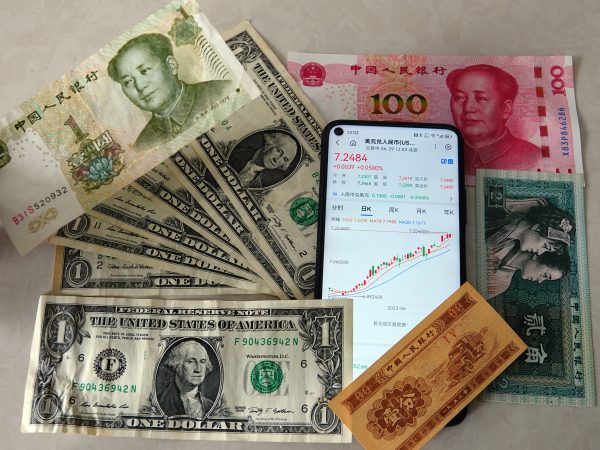Feasibility is mainly conditioned by structural circumstances — hedging is likely to end primarily if US–China rivalry escalates into open confrontation, direct conflict or all-out war. All bets would then be off as weaker states would be entrapped into the conflict against their will.
There are also circumstances where a state might abandon hedging willingly — when a potential danger becomes an immediate threat that the state must counterbalance and when there exists reliable allied support capable of counterbalancing said threat, the state will switch to full-fledged direct balancing.
Unless these structural conditions prevail, states are likely to hedge for as long as possible. While hedging is no panacea, there are three interrelated factors why Southeast Asian states still insist on doing so — shades of grey, concerns about a self-fulfilling prophecy and the shadow of uncertainty.
Southeast Asian states’ perceptions of threats are far from black and white. Rather, they perceive all powers in ‘shades of grey’, as both sources of problems and solutions to varying degrees. While Southeast Asian states, particularly those with overlapping claims in the South China Sea, perceive China as a source of threat and their defence partnerships with Western powers as essential support, these perceptions are mixed and ambivalent.
While China’s assertiveness is growing, it is not yet an immediate threat that must be counterbalanced at all costs. For most if not all Southeast Asian states, there are a wide array of problems and perceived dangers that are more pressing than the ‘China challenge’.
China is still viewed by ASEAN states as an indispensable partner in tackling development and related issues. These are among the top priorities of ruling elites across ASEAN capitals because creating jobs, delivering growth, ensuring stability, managing internal problems and winning elections are the principal pathways to preserving their domestic legitimacy. For ASEAN states, geographical proximity means that China is a permanent factor in external equations. While regional concerns over tensions across the Taiwan Strait are growing, not all in Southeast Asia equate ‘China in Asia’ with ‘Russia in Europe’.
While the United States is still viewed as a vitally important partner, especially in the security realm, its economic and diplomatic roles are seen as being in relative decline, with its geopolitical acts occasionally considered sources of apprehension and anxiety. Various US actions under the ‘free and open Indo-Pacific’ strategy — from promoting the Quad and AUKUS and conducting high-profile visits to Taiwan, to pursuing economic and technological decoupling — are perceived to be driven more by its desire to preserve its global primacy than to promote regional stability.
As militarily weaker actors, Southeast Asian states want to leverage a stable balance of power to constrain China’s actions. But in the face of intensifying big power rivalry and an increasingly crowded Indo-Pacific region, ASEAN states are becoming apprehensive that ‘constrainment’ might escalate into containment. They are increasingly concerned about the dangers of a self-fulfilling prophecy — that some powers’ open identification of China as an adversary and the act of ganging up with ‘like-minded’ nations could turn a potential danger into an imminent threat.
Some ASEAN states have been worried about AUKUS, not just over its impact on nuclear non-proliferation, but also over a possible arms race and escalation of tensions. As more non-ASEAN mechanisms like the Quad and AUKUS gain momentum, ASEAN states are also concerned that ASEAN centrality might be marginalised. There are growing fears that economic decoupling, despite being re-labelled as ‘de-risking’, will lead to economic bifurcation and eventually, across-the-board polarisation. The current cycles of action and reaction could lead to escalation, outright containment, confrontation, conflict and entrapment.
ASEAN states do not want containment. If this comes about, the weaker states will be the first to be impacted, in part because their proximity to the South China Sea and Taiwan Strait would almost certainly drag some of them into a big-power war.
The shadow of uncertainty in the region means that as power rivalries become more intense, rational states typically deepen their hedging because of a variety of ‘just-in-case’ scenarios. In Southeast Asia, uncertainty is linked to the possibility of an even more assertive China, the risk of Trump’s return and any dramatic shift in the global power configuration. Hedging is fundamentally about the human instinct of mitigating multiple perceived risks under uncertain conditions.
Enabling Southeast Asian states to hedge is good for all powers. Southeast Asian hedging means that no state wants to side with one power against another. This helps ensure ASEAN neutrality, maintain Southeast Asian autonomy and prevent regional polarisation, keeping the space for countries of diverse interests to continue forging inclusive, region-wide cooperation. This is not an ideal situation for any of the giants. But precisely because this is not the best scenario for any of the rivalling powers, it is the next-best scenario for all under the current circumstances.
Cheng-Chwee Kuik is Professor in International Relations and Head of the Centre of Asian Studies, Institute of Malaysian and International Studies, at National University of Malaysia.
This article was developed based on the writer’s presentation at the Southeast Asia Regional Geopolitical Update at The Australian National University on 1 May 2023.

